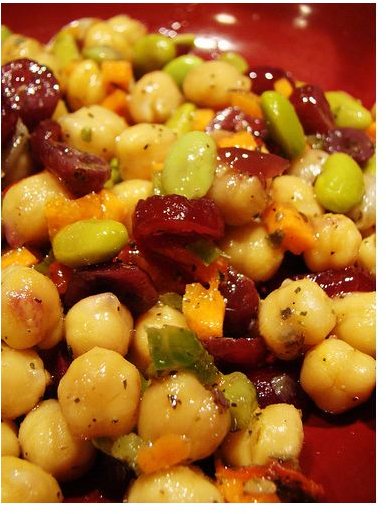The Nutritional Value and Health Benefits of Chickpeas: One of Nature's Healthiest Legumes
Chi-Chi Beans
Chickpeas are small, round legumes with a creamy, slightly nutty flavor. They come in a variety of colors, such as black, green or red, although the typical garbanzo bean is light brown. Not only are chickpeas known as garbanzo beans, but they are sometimes called Egyptian peas as well. The health benefits of chickpeas have come second to the versatility and taste of this popular legume. They are used in a variety of dishes, from curried chickpeas and rice to hummus.
Of all the types of legumes, chickpeas are the most popular beans of Middle Eastern and Indian cuisine. They have been an important source of protein in both areas for hundreds, if not thousands of years. The garbonzo bean originated in the Middle East, where their consumption was first documented seven thousand years ago. They were a regular food source of the ancient Egyptians, and then later for the Greeks and Romans.
Nutrition and Chickpeas
Chickpeas are an important source of nutrition, with trace minerals, fiber and protein. They are a rich source of molybdenum, which is a crucial nutrient for anyone who consumes sulfites, found in wine, luncheon meats and salad bars. This trace mineral helps to detoxify sulfates, which would otherwise build-up and be harmful to the body. Molybdenum also is necessary for various enzymes, normal cell functioning and the health of teeth and bones. A deficiency is associated with mouth and gum problems, as well as impotence in elderly men. One cup of cooked garbanzo beans provides 184 percent of the daily recommended amount of molybdenum.
What else are chickpeas good for? The health benefits also include helping the body to lower LDL, or bad cholesterol levels. Almost all types of legumes are rich sources of dietary fiber, and the garbanzo bean is no exception. With nearly half of the daily requirement for fiber in one serving, eating chickpeas helps the body eliminate LDL cholesterol, and at the same time slows digestion so more nutrients can be absorbed and blood sugar levels can remain stable.
This nutritious bean also is an excellent food for heart health and the prevention of cardiovascular disease. Not only are there cholesterol lowering benefits of chickpeas, but the folate in this legume also lowers homocysteine levels. Homocysteine is a compound found in the body that, in high concentrations, is directly linked to heart disease. Magnesium is also vital for the heart. This mineral allows blood vessels to relax, which improves circulation and increases oxygen and nutrient transport throughout the body.
Eating different types of legumes is a great way to provide the body with low-fat sources of protein. One serving has nearly 30 percent of the daily requirement for protein, and when combined with whole grains such as rice, the protein in chickpeas is comparable to that from animal sources.
Cooking Chickpeas
What are some ideas for serving chickpeas? With its mild, nutty flavor and hearty feel, chickpeas can be added to almost any dish, or carry an entire entree. They are a great addition to salads, soups and pastas. Prepared chickpeas can be blended with lemon juice, olive oil, garlic and spices for homemade hummus, which can then be spread on bread, or used as a protein-rich vegetable dip. Also, they are delicious simmered in a curry or spicy tomato sauce, and then served over rice.
Dried chickpeas can usually be found in the bulk food section of the grocery store, or buy in cans. The health benefits of chickpeas are mostly still intact, only about 15 percent of the nutritional value is lost, except for folate; about half of this nutrient is lost during canning.
As healthy as the garbanzo bean is, like all things, eat chickpeas in moderation. They contain both purines and oxalates, two compounds that can become harmful in high quantities, particularly for people with kidney or gallbladder problems.
References
Balch, Phyllis A. “Prescription for Nutritional Healing.” Fourth Edition (Penguin Books, 2006).
World’s Healthiest Foods
photo credit: norwichnuts
Please read this disclaimer regarding the information contained within this article.
